Isolationism in Photography: William Mark Sommer: The Loneliest Highway
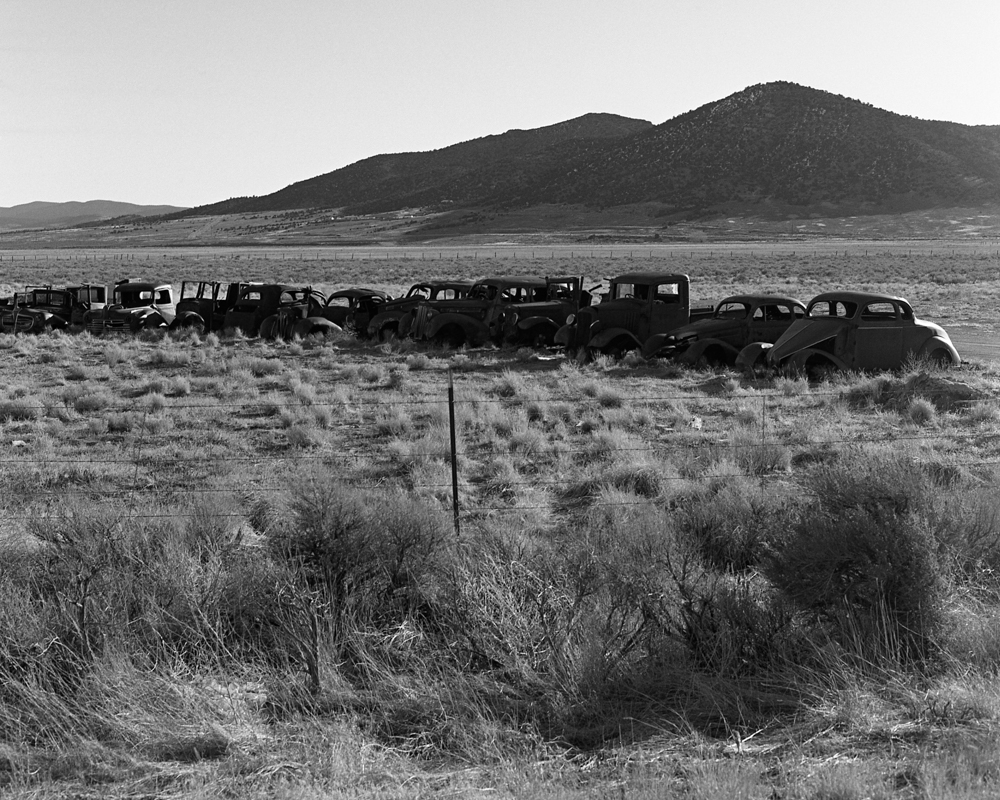
© William Mark Sommer, Auto Junk Yard, Created with a Hasselblad 500c/m with Kodak Tmax 400iso film, developed in Kodak D76 developer
What does it mean to be alone? To be isolated from the people and things we hold dearest? Since the pandemic, it seems like we all have an answer to this very question. Some people embraced the mandatory isolation while others struggled being forced to be apart from their loved ones. This week will feature photographers who captured moments they felt most alone and the ways this isolation expressed itself in their lives.
Artist William Mark Sommer explores what it meant to be truly alone in his project, The Loneliest Highway. Taking a road trip along the Lincoln Highway in Nevada, Sommers documented spaces that felt barren and empty due to the COVID-19 pandemic, in an effort to capture this new way of living — closed off and separated from one another. The scenes of wide open fields and empty streets make it seem as though Sommers has brought us back in time to a place untouched by the demands of society.
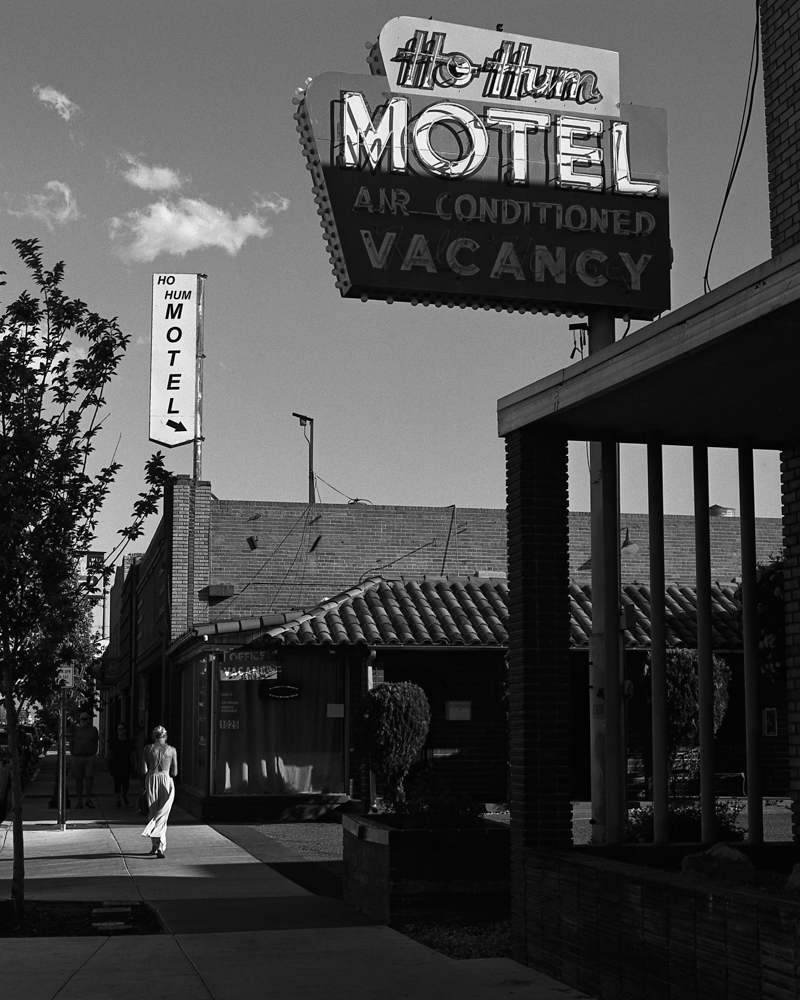
© William Mark Sommer, Away, Created with a Hasselblad 500c/m with Kodak Tmax 400iso film, developed in Kodak D76 developer
William Mark Sommer is a visual artist and educator working within the small town of Loomis, California. Through Sommer’s work in analog photography, he has received a BFA in Art Photography from Arizona State University and traversed the United States developing a practice that engages in themes of human nature, preservation, empathy and time.
Growing up in a bypassed highway town of Loomis, Sommer’s life was shaped by small-town American culture. This culture along the Lincoln Highway gave him a deep admiration towards the overlooked and in-between places that were forgotten by the many. Through his many travels he has gained a closer understanding with complexities of America and has created perspective on time through his work.
Sommer has exhibited projects in North America and Europe; venues including, The International Photography Hall of Fame and Museum, Center for Fine Art Photography, Midwest Center for Photography, Center for Photographic Art, Belfast Photo Festival, Incadaques International Photo Festival, Northlight Gallery. His awards include Life Framer’s First Prize Award Selected by Alex Prager and British Journal of Photography & 1854 Media “Open Walls” and “Decade of Change,” He has also been featured in publications like Stay Wild magazine, Lodown Magazine, Aint Bad, Booooooom, C41 magazine, and Subjectively Objective.
Follow William Mark Sommer on Instagram: @williammarksommer

© William Mark Sommer, Covid Wedding, Created with a Hasselblad 500c/m with Kodak Tmax 400iso film, developed in Kodak D76 developer
The Loneliest Highway
The empty stretch of road goes on for miles, nothing but the occasional sign or the passerby as the pavement beneath my tires breathes the melody of past motorists. The Loneliest Highway is my lyrical journey across Nevada finding solace in the emptiness along the Lincoln Highway in the wake of the Covid-19 Pandemic. This melancholy song is driven by the feelings of isolation that conveys the essence of the stay-at-home orders and the loneliness that came in seclusion afterward. Through these discoveries in loneliness along the road I was able to develop catharsis of the moment and empowerment to convey this uncertain time. Along this lonely road the lines move like a day in wait as I pass through the forgotten towns that align the highway, nothing to be said or heard but the whispers of what came before and a hope in betterment of tomorrow. -William Mark Sommer
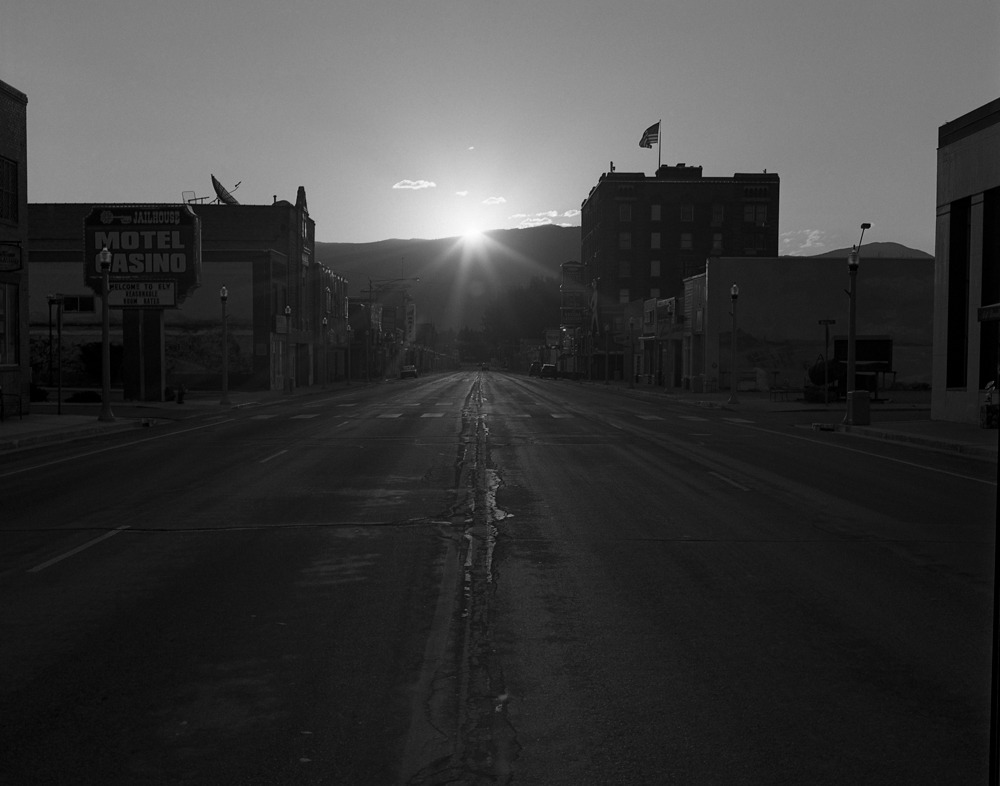
© William Mark Sommer, Ely Sunrise, Created with a Hasselblad 500c/m with Kodak Tmax 400iso film, developed in Kodak D76 developer
Kassandra Eller: Before we begin, I just want to say that this project truly reflects isolation and desolation. With each photo, I see the past and the present and how we got to be the society we are today. In your statement, you say this all began during the COVID-19 pandemic. I would love to know how the idea for this project came about and what made you start it.
William Mark Sommer: Thank you for your kindness, I’m glad you were able to feel that within the work. The Loneliest Highway grew out of my need to find purpose within the pandemic. Being displaced from my previous projects and dealing with the trials and impact of Covid, I felt charged to create again; if not for my own sanity. Being inspired by home along the Lincoln Highway in a previous work, I sought to push forward to create through and along this neglected highway to connect to emotions of this time in this place that was already distanced. Through connecting each part and feeling to the highway, I got back on the road to see what I could find.
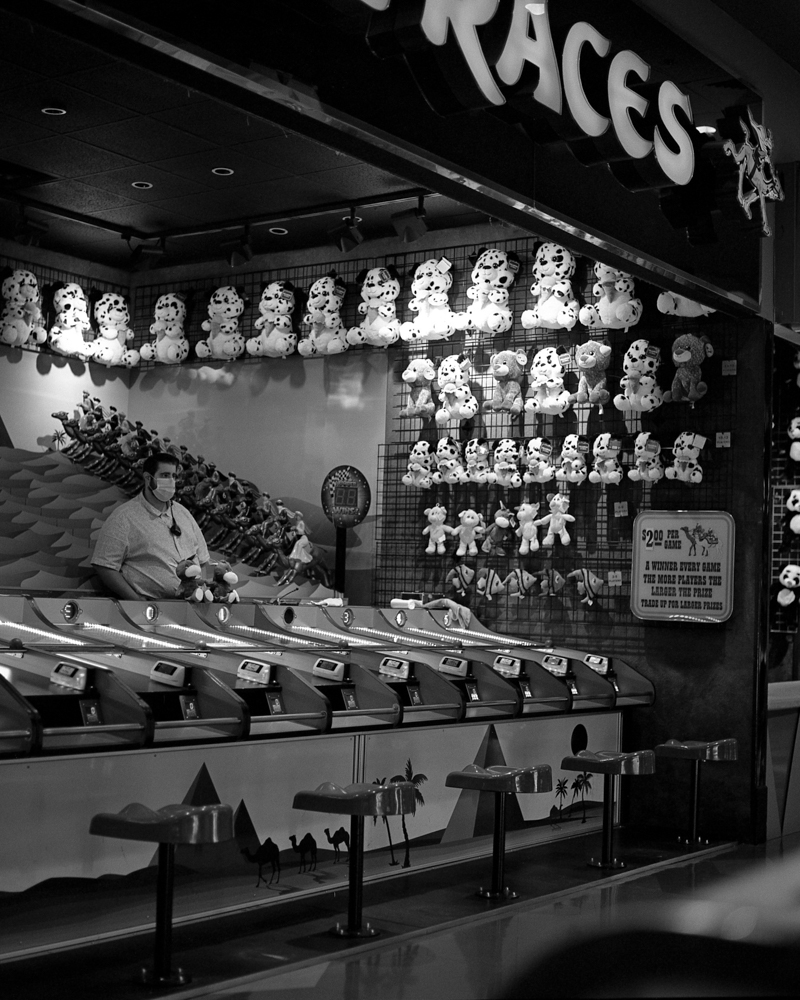
© William Mark Sommer, Empty Circus, Created with a Hasselblad 500c/m with Kodak Tmax 400iso film, developed in Kodak D76 developer
KE: The highway you chose is very specific and seems to hold a lot of meaning to you, based on the photos you have taken. Why did you choose to drive this highway?
WS: This highway is the main street of my hometown, I grew up along the Lincoln Highway and though this highway stretches across the full U.S., it will always be home to me. Living along the California stretch of the highway, the Nevada route always provided escape for my family, it was the road we always traveled on family trips and it was the road I drove to explore as I grew up. Coming back to Nevada to experience the changes within this stretch of the highway after years away only felt right to thoroughly connect to the uncertainty, strife and loneliness brought on by the pandemic.

© William Mark Sommer, The Loneliest Road, Created with a Hasselblad 500c/m with Kodak Tmax 400iso film, developed in Kodak D76 developer
KE: How long did The Loneliest Highway project take you and do you feel as though it is complete?
WM: I started The Loneliest Highway the summer of 2020 and as it stands, I feel it is complete in initial creation of photos. I sought for this project to cover my personal feelings and perspective within the pandemic, but as time has gone on there has been a shift back to normalcy in culture which has allowed for many people to move on and my emotions to fade as we have come back together. Though many of the issues still progress within this phase of life, I feel I have mentally found a conclusion to this story.
It might be an odd conceptual perspective, but I don’t know a project is ever fully complete in the way it can be seen from the edit we seek for the gallery or the book form. I am still working with and exploring these methods today and I feel excited to try and develop new and unique ways to experience this work.
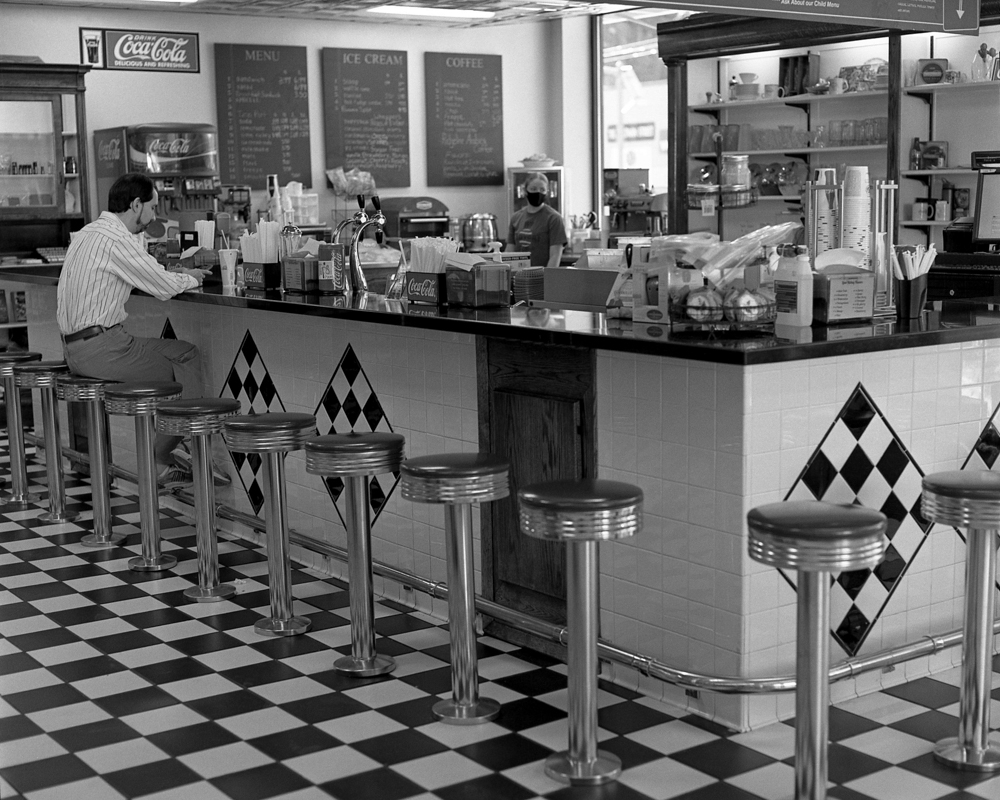
© William Mark Sommer, Lunch, Created with a Hasselblad 500c/m with Kodak Tmax 400iso film, developed in Kodak D76 developer
KE: These images are powerful both in the subject matter as well as in the way you have chosen to photograph the highway. How did you decide what to photograph? Did each scene have important significance to you as you drove by these places?
WS: Thank you again for your kindness. I create my works in hybrid method of intuitive photographing and deliberate exploration. Through my first trip or initial creating of a project, I seek to experience the world that is in front of me and explore my current thoughts and ideas that have inspired me to get out. Through working with images in the studio, I seek to derive meaning from each image and build ideas of further photographs. After each trip, my thesis grows to what the project is and builds the importance of each work.
After many trips down The Loneliest Highway, I feel each place has a special memory that encapsulates an area or specific place. From the miles of sitting in the back seat as a child, to the necessity of escape as an adult, I have found meaning in every stop and every hour on the road. With each location I photographed, I have found a unique story to convey through experience or metaphor, from their stories to mine. Everything has an important story to tell.
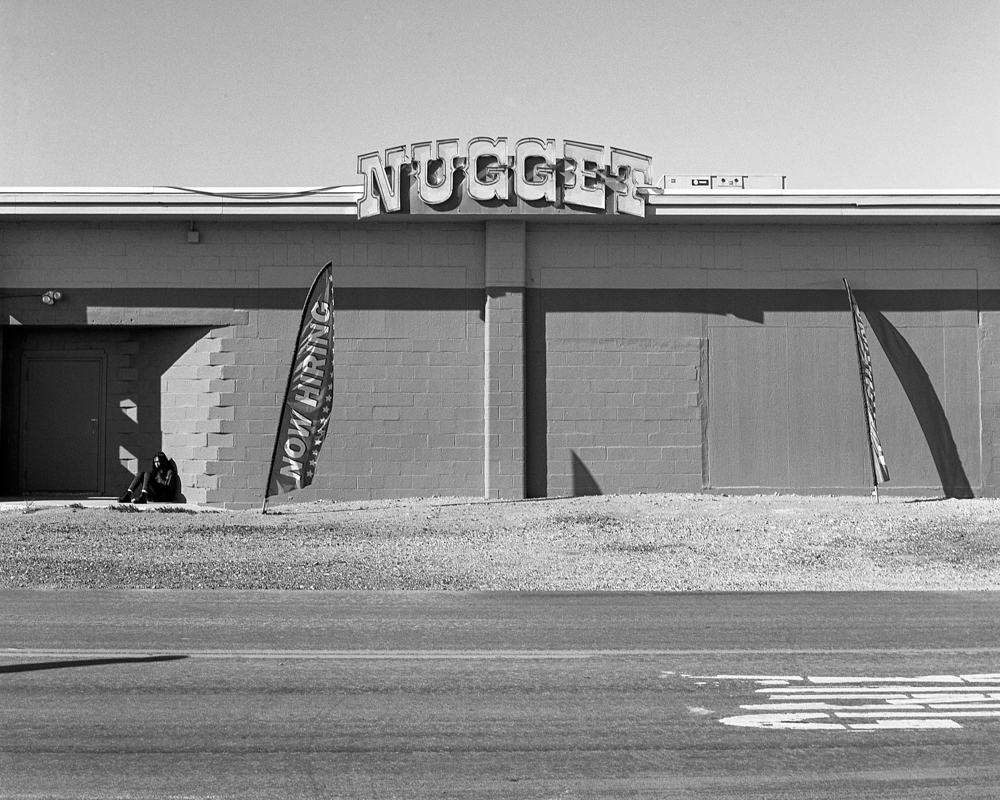
© William Mark Sommer, Nugget #4, Created with a Hasselblad 500c/m with Kodak Tmax 400iso film, developed in Kodak D76 developer
KE: I would love to discuss the way you compose your images. Even in the up-close image of the wedding dress, there is still this vast emptiness that emphasizes the photo. Did you make any considerations in the way you composed each photo?
WS: Through this project, I was truly driven by feeling; feeling of being lost and the need to stay away from others. These feelings gave my work and my perception of the world an emptiness of being. Through creating intuitively, I feel I tap into these feelings within a flow state and let intuition guide me to what I see or how I would convey a situation.
When creating I like to give myself constraints of only being on the select road and working with a single camera with a fixed lens. Creating this work with a Hasselblad 500c/m with 80mm lens, it gives constraints, but also the freedom to compose the image in the most ideal way.
When thinking back to creating the wedding dress photo, the sign caught my eye and referenced the concept of having to get married in a mask and the feeling of how hard it would be to not have your loved ones there for your special day. These feelings of a loss of a moment drew me to capture the commercial side of the wedding studio’s window display. In capturing the precise angle and composition, I looked toward the refection to convey my perspective to having life pass by along the highway seeking for my own special moment.

© William Mark Sommer, Salt Route, Created with a Hasselblad 500c/m with Kodak Tmax 400iso film, developed in Kodak D76 developer
KE: The Loneliest Highway features a mix of scenic landscapes and images featuring man-made structures. Does this dichotomy of nature vs. manmade play an important role in this project?
WS: Though I wanted to depict more emotions of loneliness as a metaphor within the long-distanced landscapes and the vacant and abandoned casinos that come up within the land, the dichotomy of manmade vs nature is a piece of this work as I travel down the highway. I feel the contrast between these spaces relies on expressing the history of this highway and why it is there. The history of this route extends through many of the first surveys of the country, to the pony express, the original transcontinental highway, its subsequent bypass with Interstate-80 and then extended bypassing with air travel; thoughts of progress have shaped this land and its paths from inception to now and has been a range of boom and bust with a story of how nature moves on without us.
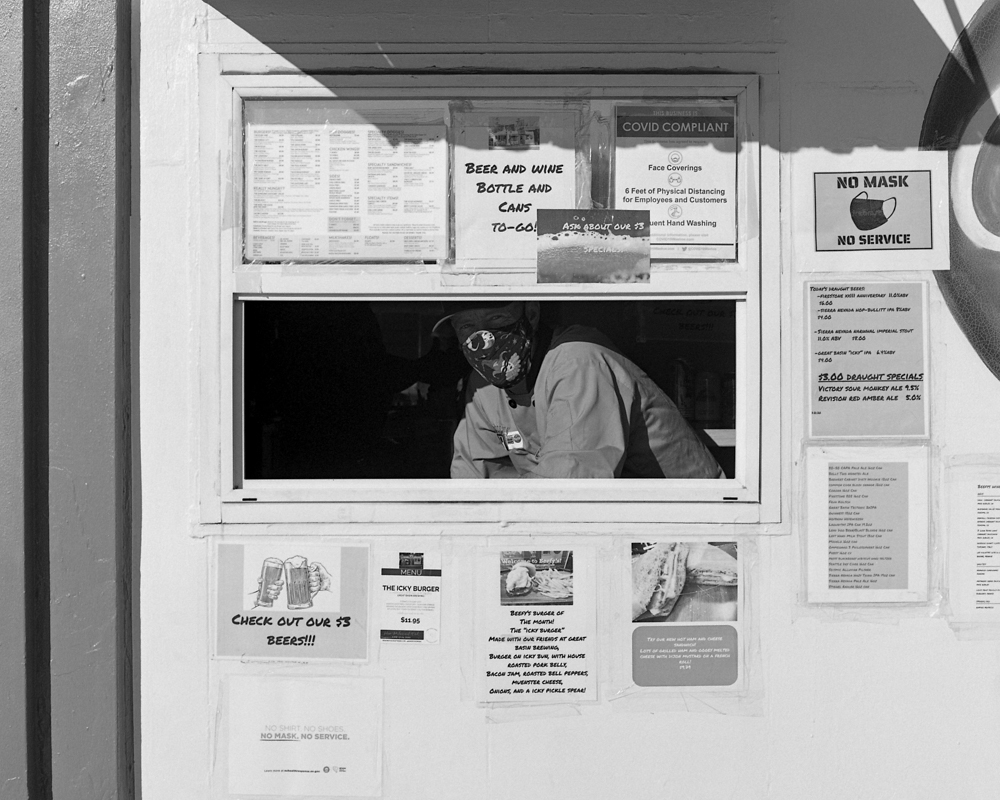
© William Mark Sommer, Takeout Window, Created with a Hasselblad 500c/m with Kodak Tmax 400iso film, developed in Kodak D76 developer
KE: I notice that human subjects are only occasionally in these photos. Due to the nature of this project, it can be assumed that you wouldn’t come across many others during your journey. I’m curious about how many people you interacted with during this project and what was the importance of including a few human subjects in these photos?
WS: It was desolate especially with Covid related closures, most of this highway I documented in this work was coined the Loneliest Road in America by Life Magazine in 1986 and as time has continued, it has only become more uninhabited. Normally, interactions on the road are what drive me to extend myself into new and growing situations, but I found interactions hard to manage through this time with the concepts of safety ever changing. These concepts only worsened my feelings of being alone and away from others which made connection more challenging when there was people around. When photographing the people within this series, I did at a distance to better convey my experience of wanting to connect but feeling unable.
With the one portrait I featured in this project, I sought for it to share some of the grace of coming together. The takeout window was one of the only places I found connection through creating this project. In this one portrait, I sought to show the strength, happiness and love of people who returned to work to feed the masses. Every time I would make the trip up the highway, I would stop here at Beefy’s in Reno. It became an important stop, if not only to have the great food that took me back to the era before, but to also have the moral boost of someone who gives kindness.
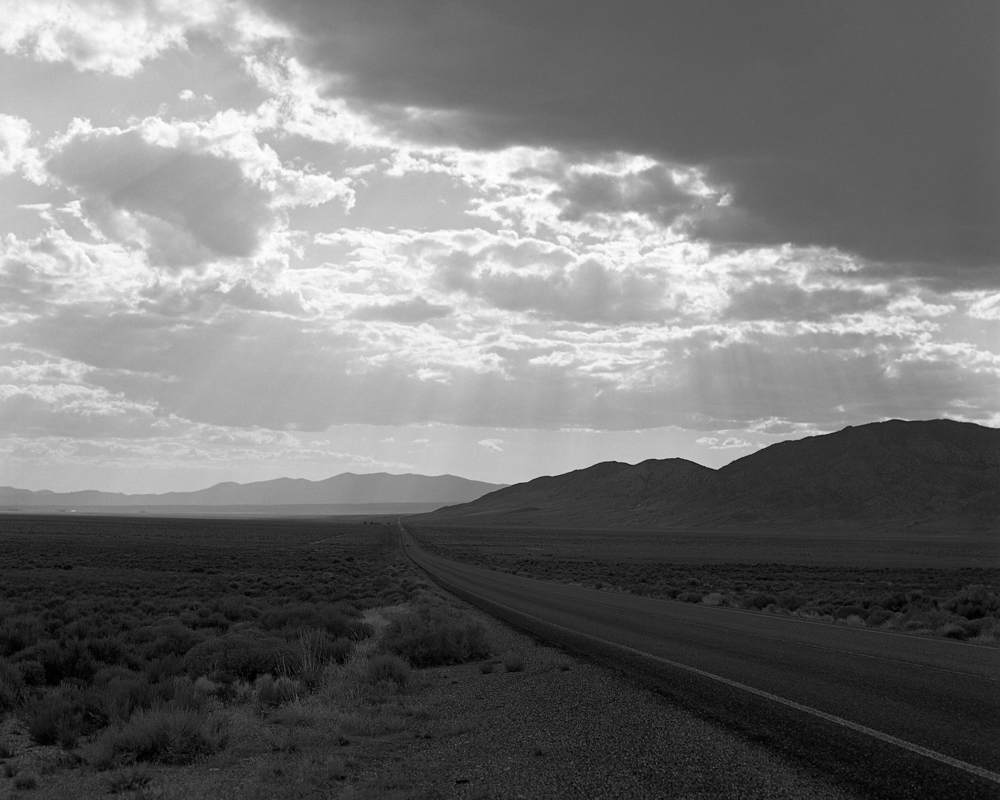
© William Mark Sommer, The Loneliest Highway, Created with a Hasselblad 500c/m with Kodak Tmax 400iso film, developed in Kodak D76 developer
KE: Many times the projects I take on become a way to process my emotions. It seems as though The Loneliest Highway may have done this for you. Did this project become a therapeutic way of understanding and processing the emotions of isolation and loneliness you felt due to the pandemic?
WS: The road has always been my place of processing thoughts or meditation on meaning. This time on the road creating definitely helped my mental state and helped me get out of my head in the trying times. I like many suffer from anxiety and stress and without the road, I’m not sure if there was any way to remedy the feelings we all shared during the pandemic. The road truly gave me a place to compartmentalize the experience while trying to ease the tensions of the moment. I would say I am still pretty messed up from the pandemic, but I try everyday to get back the community many of us lost in exile. Though not a perfect fix, the road gives me the space to focus on one thing turn the music up and just drive. I hope your projects have helped you in the way creating on the road has for me.
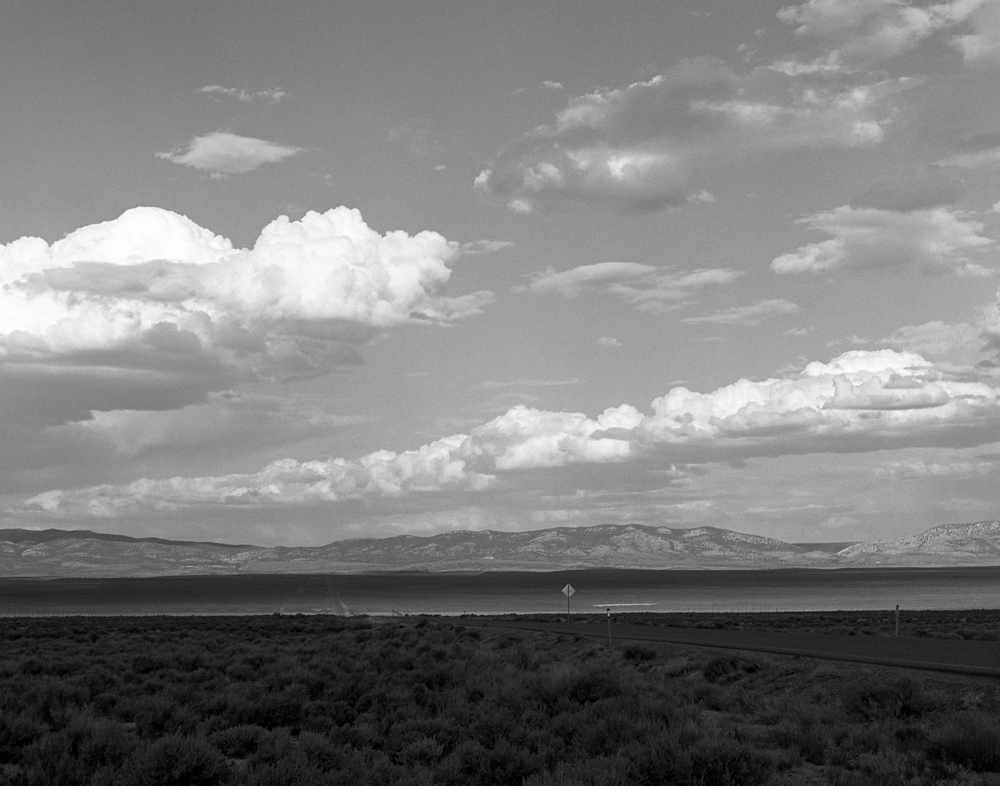
© William Mark Sommer, Open Road, Created with a Hasselblad 500c/m with Kodak Tmax 400iso film, developed in Kodak D76 developer
KE: What is next for you. Is there anything you are currently working on?
WS: After having a solo show with Chalk Hill Gallery and Artist Residency this past March, I have been inspired to experience works on the walls again and how this might change my perceptions of projects within the installation format. I seek to also develop further ideas toward making works more accessible to be seen by the public, both in the book form and in exhibition.
With developing ideas around ways to exhibit projects, I’m also excited get back to working a few other projects that I’ve developed and thought about over the last few years. One being a project about the racing culture of the Bonneville Salt Flats, another being about travelers through Wyoming and the many other personal projects I have been continuing over the years. With all this, I’m excited to see where the highway brings me next.
KE: Is there anything else you would like to add?
WS: Creation can be anything don’t be afraid to explore any avenue, enjoy what you make, and don’t let others deter you from what you like to create.
Posts on Lenscratch may not be reproduced without the permission of the Lenscratch staff and the photographer.
Recommended
-
Earth Week: Aaron Huey: Wallpaper for the End of the WorldApril 26th, 2024
-
Earth Week: Casey Lance Brown: KudzillaApril 25th, 2024
-
Tara Sellios: Ask Now the BeastsApril 6th, 2024
-
ALEXIS MARTINO: The Collapsing Panorama April 4th, 2024
-
Emilio Rojas: On Gloria Anzaldúa’s Borderlands: The New MestizaMarch 30th, 2024





























































